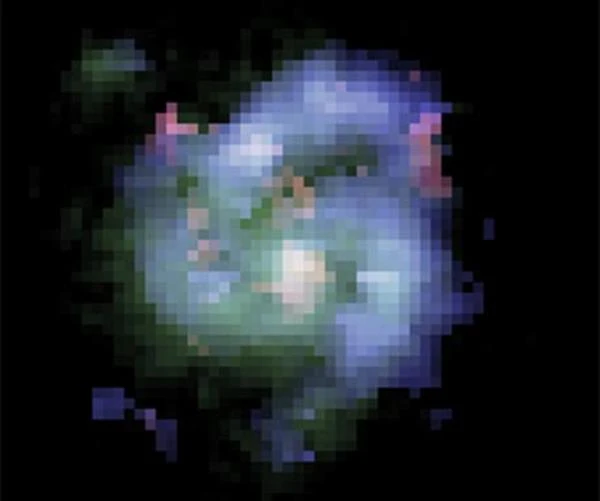
In 1998, two independent teams led by Saul Perlmutter (1959-), Brian P. Schmidt (1967-), and Adam Riess (1969-) discovered, through the study of Type Ia supernovae, that the expansion of the Universe was not slowing down due to gravity as previously thought, but was actually accelerating. To explain this observation, cosmologists introduced the concept of dark energy, a mysterious component representing about 70% of the total energy content of the Universe.
Dark energy is sometimes equated with a cosmological constant \(\Lambda\), a term added to Einstein's equations of general relativity (1915). It can be interpreted as an intrinsic property of the quantum vacuum, or as a form of dynamic scalar field (quintessence). Its negative pressure would exert a gravitational repulsion, causing the acceleration of the expansion. However, its physical origin remains unknown.
Within the framework of the Friedmann-Lemaître-Robertson-Walker model, the expansion equation is written as: \(\;H^2 = \frac{8\pi G}{3}\rho - \frac{k}{a^2} + \frac{\Lambda}{3}\;\) where \(H\) is the Hubble constant, \(\rho\) is the total matter-energy density, \(k\) is the spatial curvature, and \(\Lambda\) is the cosmological constant. A term \(\Lambda > 0\) leads to accelerated expansion.
Some cosmological theories propose the existence of a multiverse, where our Universe would be just one bubble among others. In this context, it has been suggested that accelerated expansion could result not only from intrinsic dark energy but also from gravitational interactions or energy flows between neighboring universes.
According to these models, each universe would have its own physical constants and energy density. The gravitational forces exerted by neighboring universes could induce an apparent effect of repulsion or acceleration of the expansion of our cosmic bubble. This hypothesis remains speculative and difficult to test with current observations, but it offers an alternative to standard models based solely on the cosmological constant \(\Lambda\).
Theoretical work using string theory and branes suggests that fluctuations in the quantum vacuum or variations in the tension of universal membranes could influence the expansion of our observable Universe. These ideas have been discussed notably by Lisa Randall (1962-) and Juan Maldacena (1968-) in the context of brane models.
N.B.:
String theory proposes that fundamental particles are vibrating strings in a 10- or 11-dimensional space. Each possible configuration of the extra dimensions (Calabi-Yau manifolds) defines a "vacuum" with its own physical constants. This multitude of possible solutions is called the landscape, and it naturally leads to the idea of a multiverse: our universe would then be just one bubble among a set of universes with different physical properties.
Dark energy now dominates cosmological evolution, ahead of dark matter and ordinary matter. This imbalance was established about 5 billion years ago, when the density of matter decreased to the point of becoming less than that of dark energy.
| Component | Energy Fraction | Nature | Comment |
|---|---|---|---|
| Dark Energy | ≈ 70% | Hypothetical (cosmological constant or dynamic field) | Responsible for accelerated expansion |
| Dark Matter | ≈ 25% | Unknown particles | Invisible, detected by gravitational effects |
| Baryonic Matter | ≈ 5% | Protons, neutrons, electrons | Stars, planets, interstellar gas |
| Multiverse Effects (hypothetical) | ? | Gravitational interactions or energy flows between universes | Could cause additional acceleration of expansion |
Sources: NASA WMAP, ESA Planck Mission, Nobel Prize in Physics 2011.
N.B.:
Dark energy remains a cosmological hypothesis. It is not observed directly but deduced from dynamic effects on expansion.